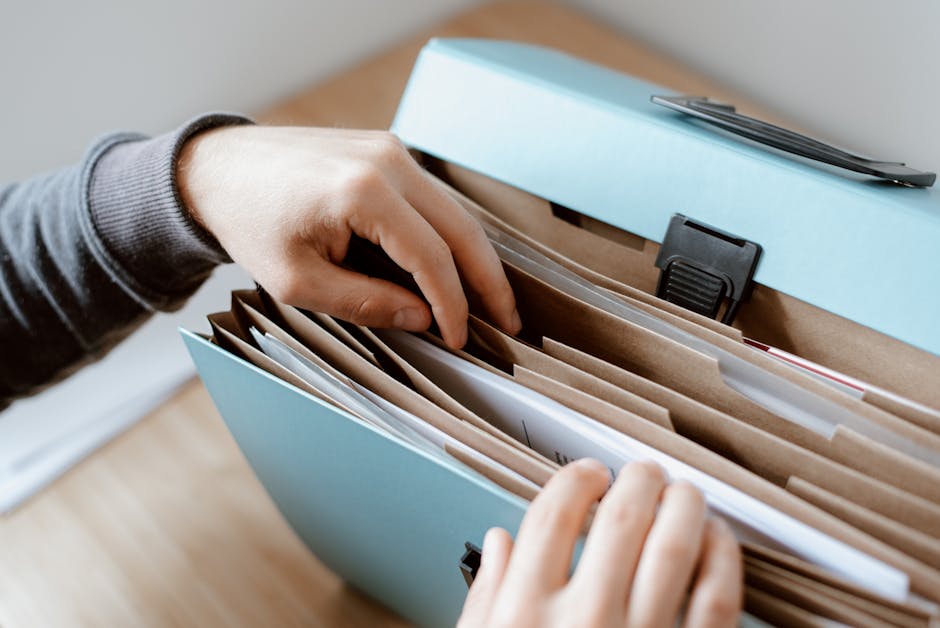Planning Your Dream Trip to Thailand: A Step-by-Step Guide to Paradise

Planning Your Dream Trip to Thailand: A Step-by-Step Guide to Paradise
So, you're dreaming of Thailand, huh? Sun-kissed beaches, vibrant culture, delicious food… I totally get it! I remember the first time I seriously considered a trip to the Land of Smiles. It felt overwhelming, like climbing a mountain blindfolded. But trust me, with a little planning, your Thai adventure can be an incredible reality. Let's break it down, step-by-step, into an easily digestible guide that will have you packing your bags and saying "Sawasdee!" in no time.
1. Defining Your Dream Thailand Experience

Before you even start looking at flights, it's crucial to figure out what your "dream Thailand trip" actually looks like. Thailand offers such a diverse range of experiences that it's easy to get lost in the possibilities. Ask yourself these questions:
A. What kind of traveler are you?
Are you a budget backpacker looking to stretch your dollar as far as possible? Or are you seeking a luxurious, pampering escape? Perhaps you're somewhere in between, wanting a balance of comfort and affordability.
B. What interests you the most?
Are you drawn to bustling city life, serene beaches, ancient temples, lush jungles, or adrenaline-pumping adventures? Maybe you crave authentic cultural immersion or want to indulge in the amazing Thai cuisine.
C. How much time do you have?
A weekend getaway will look drastically different from a month-long exploration. Be realistic about how much you can see and do with your available time.
For example, my first trip was two weeks long, and I wanted a bit of everything. I spent time in Bangkok exploring temples and markets, relaxed on the beaches of Krabi, and even took a cooking class. It was a whirlwind, but it gave me a taste of all that Thailand had to offer.
2. Setting a Realistic Budget

Okay, let's talk money. Thailand can be incredibly affordable, but it's crucial to have a budget in mind to avoid any surprises. Consider these factors:
A. Flights: This will likely be your biggest expense. Search for flights well in advance (3-6 months is ideal) and be flexible with your travel dates. Mid-week flights and traveling during the shoulder seasons (April-May and September-October) can often save you money.
B. Accommodation: From budget-friendly hostels to luxurious resorts, Thailand offers a wide range of options. Consider the location, amenities, and reviews when making your choice. I've stayed in everything from basic guesthouses to beautiful beachfront bungalows, and each had its own charm.
C. Activities and Entrance Fees: Temples, national parks, cooking classes, boat trips – these all add up. Research the costs of activities you're interested in and factor them into your budget.
D. Food and Drinks: Thai street food is incredibly cheap and delicious! You can easily eat well for just a few dollars a day. Restaurant meals will be more expensive, but still generally affordable compared to Western prices. Factor in drinks, snacks, and the occasional splurge.
E. Transportation: Getting around Thailand is relatively inexpensive. Buses, trains, ferries, and tuk-tuks are all readily available. Consider the cost of transportation between cities and within cities.
F. Visas and Travel Insurance: Depending on your nationality, you may need a visa. Don't forget to factor in the cost of travel insurance, which is absolutely essential in case of illness, injury, or lost luggage.
G. Souvenirs and Shopping: It's hard to resist the temptation to buy souvenirs and gifts! Set a budget for shopping to avoid overspending.
As a general guideline, backpackers can often get by on $30-$50 per day, while those seeking more comfort might budget $75-$150 per day. Luxury travelers can easily spend $200+ per day. But remember, these are just estimates, and your actual spending will depend on your individual choices.
3. Choosing Your Destinations

This is where the fun really begins! Thailand has so much to offer, so choosing your destinations can feel a little daunting. Here are some popular options to consider:
A. Bangkok: The vibrant capital city is a must-see. Explore stunning temples like Wat Arun and Wat Pho, wander through bustling markets like Chatuchak Weekend Market, and take a boat trip along the Chao Phraya River. I recommend spending at least 3-4 days in Bangkok to get a good feel for the city.
B. Chiang Mai: Located in northern Thailand, Chiang Mai is known for its ancient temples, elephant sanctuaries (do your research and choose ethical sanctuaries!), and lush mountains. It's a more relaxed and laid-back alternative to Bangkok. I loved spending time here learning about the local culture and exploring the surrounding countryside.
C. Phuket: Thailand's largest island, Phuket offers beautiful beaches, stunning sunsets, and a vibrant nightlife. While it can be touristy, there are still plenty of quieter spots to discover. Patong Beach is known for its nightlife, while Kata and Karon beaches are more family-friendly.
D. Krabi: Located on the Andaman coast, Krabi is famous for its dramatic limestone cliffs, turquoise waters, and pristine beaches. Railay Beach, accessible only by boat, is a must-see. I spent several days rock climbing and swimming in Krabi, and it was pure paradise.
E. Koh Samui: Another popular island destination, Koh Samui offers a mix of beaches, resorts, and nightlife. Chaweng Beach is the main tourist area, while Bophut and Mae Nam beaches are quieter options.
F. Other Islands: Don't overlook smaller islands like Koh Lanta, Koh Tao, and Koh Phi Phi (made famous by the movie "The Beach"). Each island has its own unique charm and offers a different kind of experience.
When choosing your destinations, consider your interests, budget, and the amount of time you have. It's better to see a few places well than to try to cram too much into your trip.
4. Booking Flights and Accommodation

Once you've finalized your destinations, it's time to book your flights and accommodation. Here are some tips:
A. Flights:
1. Use flight comparison websites like Skyscanner, Google Flights, and Kayak to find the best deals.
2. Be flexible with your travel dates. Flying on weekdays and during the shoulder seasons can often save you money.
3. Consider flying into different airports. For example, flying into Kuala Lumpur (KUL) or Singapore (SIN) and then taking a budget airline to Thailand can sometimes be cheaper.
4. Book directly with the airline whenever possible to avoid potential issues with third-party booking sites.
B. Accommodation:
1. Use booking websites like Booking.com, Agoda, and Airbnb to find accommodation that suits your budget and preferences.
2. Read reviews carefully before booking. Pay attention to comments about cleanliness, location, and service.
3. Consider booking directly with the hotel or guesthouse, especially for longer stays. You may be able to negotiate a better rate.
4. Book accommodation with free cancellation whenever possible, just in case your plans change.
I always start my search on comparison websites and then check the hotel's own website to see if they offer a better deal. It's also worth contacting the hotel directly to inquire about discounts or special offers.
5. Planning Your Itinerary

Now for the exciting part – planning your daily activities! This is where you can really tailor your trip to your interests and preferences. Here are some tips:
A. Research Activities: Research the activities and attractions that interest you in each destination. Read reviews, check prices, and make a list of your "must-do" experiences.
B. Prioritize: With limited time, you'll need to prioritize. Decide which activities are most important to you and focus on those. Don't try to see and do everything – it's better to have a few amazing experiences than to rush through a long list of attractions.
C. Create a Flexible Itinerary: While it's good to have a plan, be flexible and allow for spontaneity. Sometimes the best experiences are the ones you don't plan!
D. Consider Transportation: Factor in the time it takes to get from one place to another. Use websites like Rome2Rio to estimate travel times and costs.
E. Book in Advance: For popular activities and tours, it's often a good idea to book in advance, especially during peak season. This will guarantee your spot and may even save you money.
My itineraries are always a work in progress. I like to have a general idea of what I want to do each day, but I also leave plenty of room for flexibility and spontaneous adventures. I always ask locals for recommendations – they often know about hidden gems that aren't listed in guidebooks.
6. Getting Your Documents in Order

Before you pack your bags, make sure you have all the necessary documents in order:
A. Passport: Ensure your passport is valid for at least six months beyond your intended stay in Thailand.
B. Visa: Check if you need a visa to enter Thailand. Many nationalities can enter Thailand visa-free for a certain period of time (usually 30 days). Check the Thai embassy or consulate website in your country for the latest visa requirements.
C. Travel Insurance: Purchase comprehensive travel insurance that covers medical expenses, trip cancellations, and lost luggage. Don't leave home without it!
D. Copies of Important Documents: Make copies of your passport, visa, travel insurance policy, and flight tickets. Keep one set of copies in your luggage and another set at home.
E. Emergency Contacts: Keep a list of emergency contacts with you, including your family members, embassy, and travel insurance provider.
I always scan all my important documents and email them to myself so I have access to them even if I lose the physical copies.
7. Packing Essentials

Packing for Thailand is relatively straightforward. The climate is hot and humid year-round, so pack light, breathable clothing. Here are some essentials:
A. Clothing: Lightweight, quick-drying clothing is essential. Pack t-shirts, shorts, skirts, dresses, and a light jacket or sweater for cooler evenings.
B. Swimsuit: You'll definitely want to pack a swimsuit for swimming, sunbathing, and water activities.
C. Comfortable Shoes: Pack comfortable walking shoes or sandals for exploring cities and temples. Flip-flops are great for the beach.
D. Sunscreen, Hat, and Sunglasses: Protect yourself from the strong sun with sunscreen, a hat, and sunglasses.
E. Insect Repellent: Mosquitoes can be a nuisance, especially in the evenings. Pack insect repellent to protect yourself from bites.
F. Medications: Bring any necessary medications, along with a copy of your prescription.
G. Universal Adapter: Thailand uses a different electrical outlet than some countries, so pack a universal adapter.
H. First-Aid Kit: Pack a small first-aid kit with essentials like bandages, antiseptic wipes, pain relievers, and diarrhea medication.
I. Hand Sanitizer: It's always a good idea to carry hand sanitizer with you, especially when eating street food.
I always pack a sarong – it's lightweight, versatile, and can be used as a towel, beach cover-up, or even a blanket on a cold bus.
8. Learning Basic Thai Phrases

While English is widely spoken in tourist areas, learning a few basic Thai phrases will go a long way in showing respect and enhancing your interactions with locals. Here are a few to get you started:
A. Sawasdee (male) / Sawasdee ka (female): Hello
B. Khop khun (male) / Khop khun ka (female): Thank you
C. Chai: Yes
D. Mai chai: No
E. Sabai dee mai?: How are you?
F. Sabai dee: I'm fine
G. Tao rai?: How much?
H. Aroy: Delicious
Even just a few simple phrases can make a big difference in your interactions with locals and show that you're making an effort to connect with their culture.
9. Staying Safe and Healthy

Thailand is generally a safe country, but it's important to take precautions to protect yourself from potential risks:
A. Be Aware of Your Surroundings: Be aware of your surroundings and avoid walking alone in dark or isolated areas at night.
B. Protect Your Belongings: Keep your valuables secure and avoid displaying expensive jewelry or electronics.
C. Be Careful with Street Food: While Thai street food is delicious, be careful about where you eat. Choose stalls that look clean and busy, and avoid eating raw or undercooked food.
D. Drink Bottled Water: Avoid drinking tap water. Stick to bottled water or purified water.
E. Watch Out for Scams: Be aware of common tourist scams, such as fake gem scams, taxi scams, and temple scams.
F. Respect Local Customs: Dress respectfully when visiting temples and other religious sites. Avoid pointing your feet at people or objects, as this is considered rude.
G. Stay Hydrated: Drink plenty of water to stay hydrated in the hot and humid climate.
H. Use Reputable Transportation: Use reputable taxi services or ride-hailing apps. Agree on the fare before getting into a taxi or tuk-tuk.
By taking these simple precautions, you can minimize your risk and enjoy a safe and healthy trip to Thailand.
10. Embracing the Unexpected

Finally, remember that travel is all about embracing the unexpected. Things might not always go according to plan, but that's part of the adventure. Be open to new experiences, be willing to step outside your comfort zone, and most importantly, have fun! Thailand is a magical place, and I'm confident that you'll have an unforgettable trip.
So, there you have it! Your step-by-step guide to planning your dream Thailand trip. Now go forth and create some amazing memories! Sawasdee!
Post a Comment